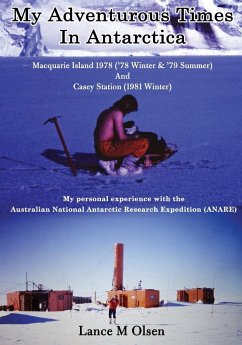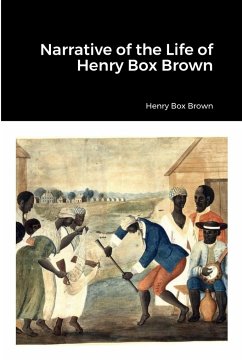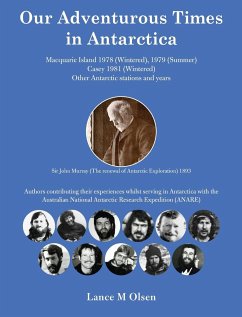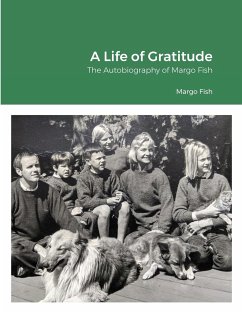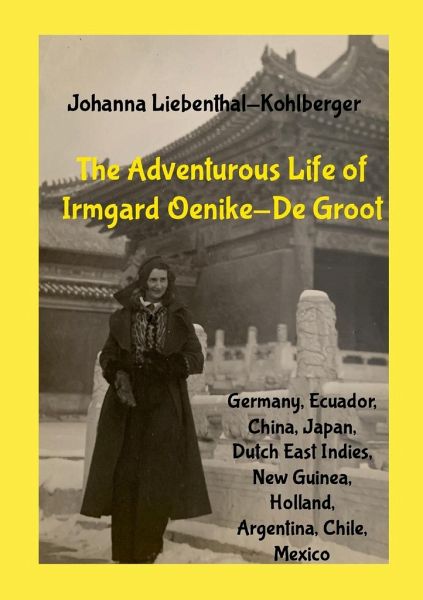
The Adventurous Life of Irmgard Oenike-De Groot
(Germany, Ecuador, China, Dutch East Indies & New Guinea, Holland, Argentina, Chile, Mexico)
Versandkostenfrei!
Versandfertig in 1-2 Wochen
33,99 €
inkl. MwSt.

PAYBACK Punkte
17 °P sammeln!
This book about Irmgard Oenike-De Groot (1903-1960) was written by her niece, Johanna Liebenthal-Kohlberger based mainly on their letter exchange between 1930 and 1960, and their occasional conversations. As she wrote in her own biography: ""Her most outstanding characteristics were her liveliness, her sociability, and her love of all things beautiful: flowers, pictures, decorations and above all beautiful fabrics. She also always dressed according to the dernier cri and loved to be the center of an elegant and stimulating society, which meant she always had a lot of friends." She was a very i...
This book about Irmgard Oenike-De Groot (1903-1960) was written by her niece, Johanna Liebenthal-Kohlberger based mainly on their letter exchange between 1930 and 1960, and their occasional conversations. As she wrote in her own biography: ""Her most outstanding characteristics were her liveliness, her sociability, and her love of all things beautiful: flowers, pictures, decorations and above all beautiful fabrics. She also always dressed according to the dernier cri and loved to be the center of an elegant and stimulating society, which meant she always had a lot of friends." She was a very independent person, curious and resourceful. She lived in a hacienda in the jungles of Ecuador, then Berlin as a working woman. In 1935 she accompanied my father (then a 18 year young man) via the Trans-Siberian Railway to Peking, China. Lived there a couple years, then visited Japan by herself, eventually going to the Dutch East Indies (now Indonesia) where she met her fourth husband, Pieter De Groot, a mining engineer with whom she moved to live in a mine in New Guinea, in the middle of nowhere. They stayed there until the Japanese occupied this territory. They were interned in 1942 in separate prisoner camps under terrible conditions. They were lucky to survive and in 1946 were able to go back to Holland. Since there were no job opportunities in postwar Europe at that time for Pieter, they emigrated to Argentina, where Irmgard's mother was living after having widowed in 1924. The country had various mining projects at the time and Pieter was able to be put in charge of an important mine in San Juan. They moved there and Irmgard was again in the middle of nowhere, in the middle of the Andes. But Irmgard adapted again to this new environment and was always positive in her letters to her niece. But his experience came abruptly to an end in 1951 and they moved on to a mining project in the Atacama Desert in Chile in 1952. But Pieter passed away in 1953 so Irmgard went to Buenos Aires, but eventually decided that there were better work opportunities in Mexico's capital. There she lived until her death in 1960. We think this compilation of letters and comments of those years (1930-1960), made by an inquisitive, independent-minded woman who was always looking for new challenges, a truly unique person for her time will be of interest to our readers.






